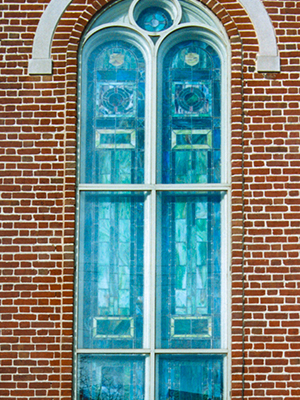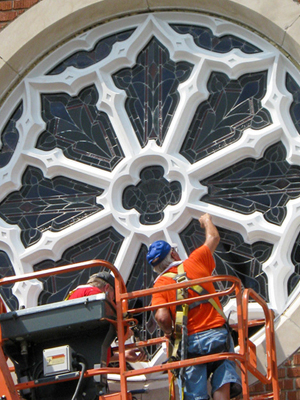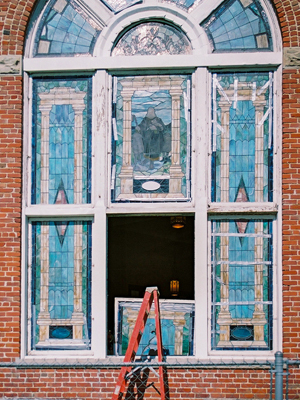
Broken Soldier Joints
Broken solder joints are a sure sign that a stained glass window is under duress. As a window ages, the lead structure within the window gets brittle. Brittle lead is more apt to crack under stress. Stress can come from multiple of sources:
The weight of the stained glass: The panel weight us supported by the lead structure. As joints break, the weight redistributes thus adding more stress to the remaining joints. Therefore, lead breakage is a progressive failure increasing in severity if left unchecked.
Expansion and contraction due to temperature fluctuations: Although not visible to the human eye, window materials expand and contract daily with fluctuations of solar temperature. These tiny movements stress the lead, sometimes even pushing the window out-of-plane into a bowed condition. Repeated expansion and contraction introduce material fatigue which weakens the lead. A good example of this is a simple paper clip. Bending a paper clip back and forth weakens the material and ultimately results in breakage. Similarly, lead can snap due to expansion and contraction.
Broken lead often occurs at the solders joints. This is because of the difference in material properties between the lead and solder. The solder joint is harder than the lead thus the lead usually breaks at the edge of the solder joint instead of through the solder joint.
Depending on the age and condition of the lead, repairing these broken joints can be difficult to accomplish. Often this condition is a sign that the window needs re-lead restoration. Re-lead restoration is the process of removing, dismantling, and reassembling the window with new lead.
Jeweled Crown, Fort Monroe, VA (re-lead restoration)







